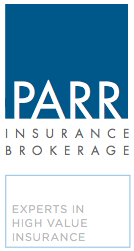
Pictured: Mary Markis of Perl Mortgage, Walt Teichen of Parr Insurance Brokerage, and Michael Shenfeld of The Shenfeld Group
Parr’s insurance adviser Walt Teichen joined a panel of industry experts at 1150 N. Lake Shore Drive to discuss the impact that rental units have on condominium buildings. Since the real estate market crash, there has been an uptick in condos available for rent. Condo owners are holding onto investment properties that won’t sell, causing their owner-occupied neighbors to appeal to the association for rental restriction bylaws.
And who could blame them? Renters make less desirable neighbors. They don’t have a stake in the property, and simply don’t care as much about the character of the development. In fact, most insurance companies perceive high rental occupancy as a sign of instability. Condominium associations should beware: when your rental percentage exceeds 10%, your building’s insurance policy will likely be surcharged. In fact, many standard markets wont even offer building coverage if the rental percentage surpasses this mark.
If your condo building allows rental units, there are a number of measures that the condo association should take to mitigate risk, such as:
- Requiring copies of the sublet contracts between owner and tenant
- Requiring proof of insurance from every tenant
- Requiring notification of vacancy
- Establishing specific rules in the bylaws regarding subletting
The exact number of allowable rental units in any given property is not boilerplate and should be based on a number of factors unique to each complex. If you would like to learn more about condominium association insurance, please contact Walt today: walt@parrinsurancebrokerage.com.
